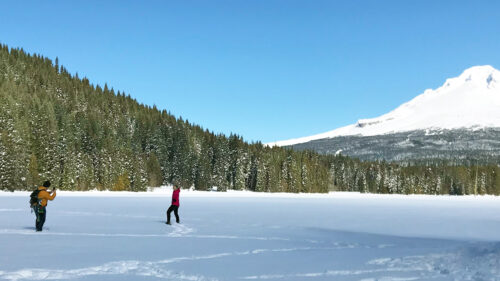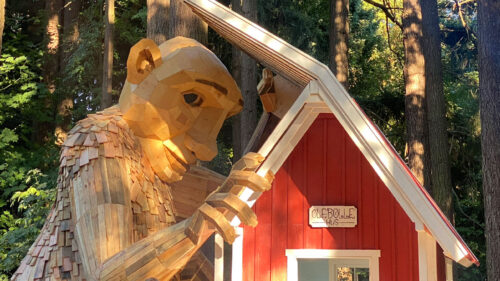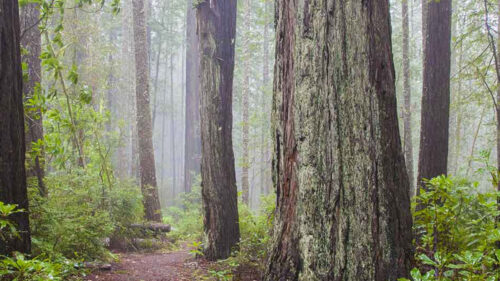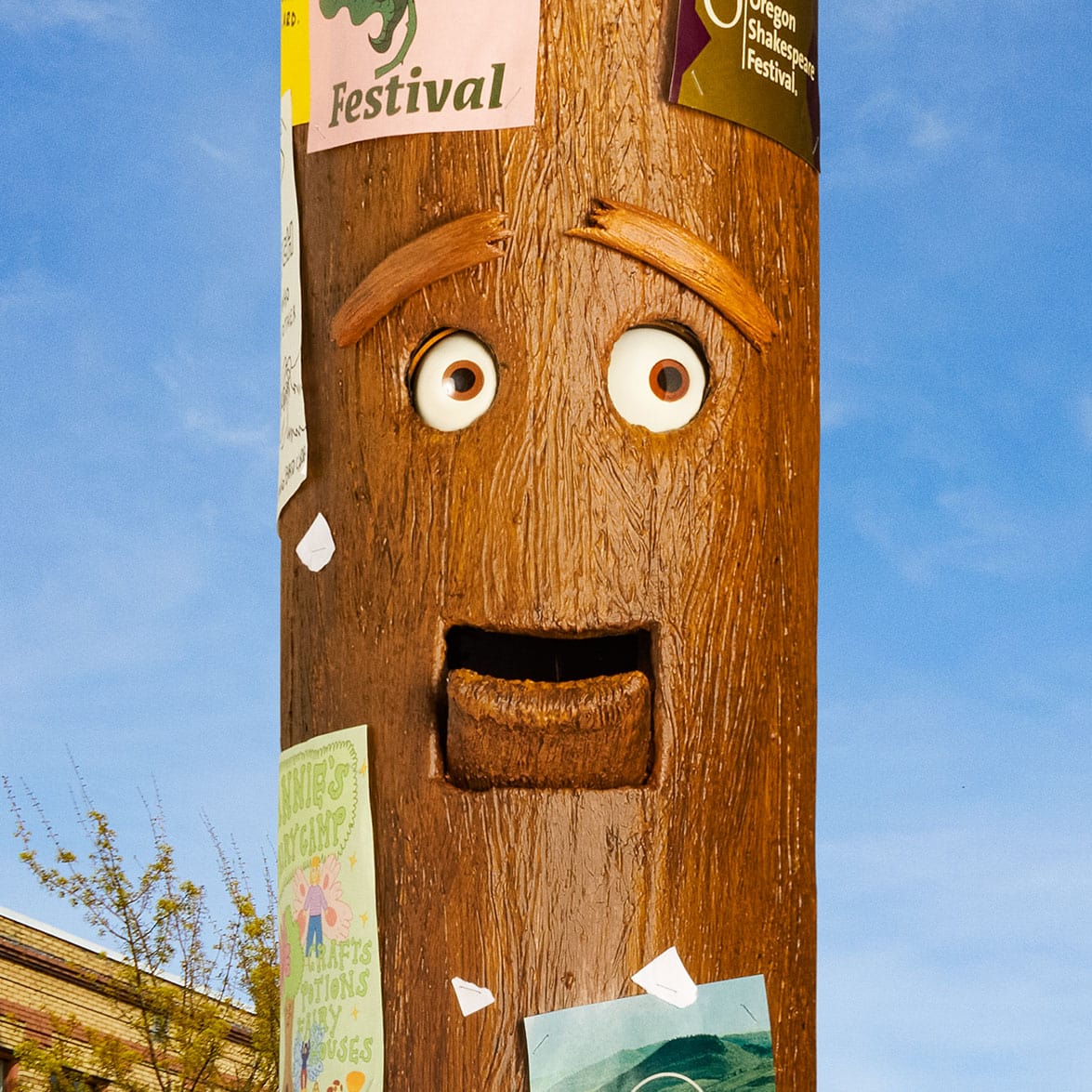Late winter and early spring feel like a time of rebirth and regrowth in Oregon — where the season’s final dustings of snow cover alpine forests, sunny days last a little longer and the year’s first wildflowers begin to bloom. If you find yourself wanting to experience that transition, plenty of low-key outdoor adventures sprawl across Oregon’s mountainous forests and expansive high desert. Here’s our beginner’s guide to wellness in some of Oregon’s peacefully remote places.
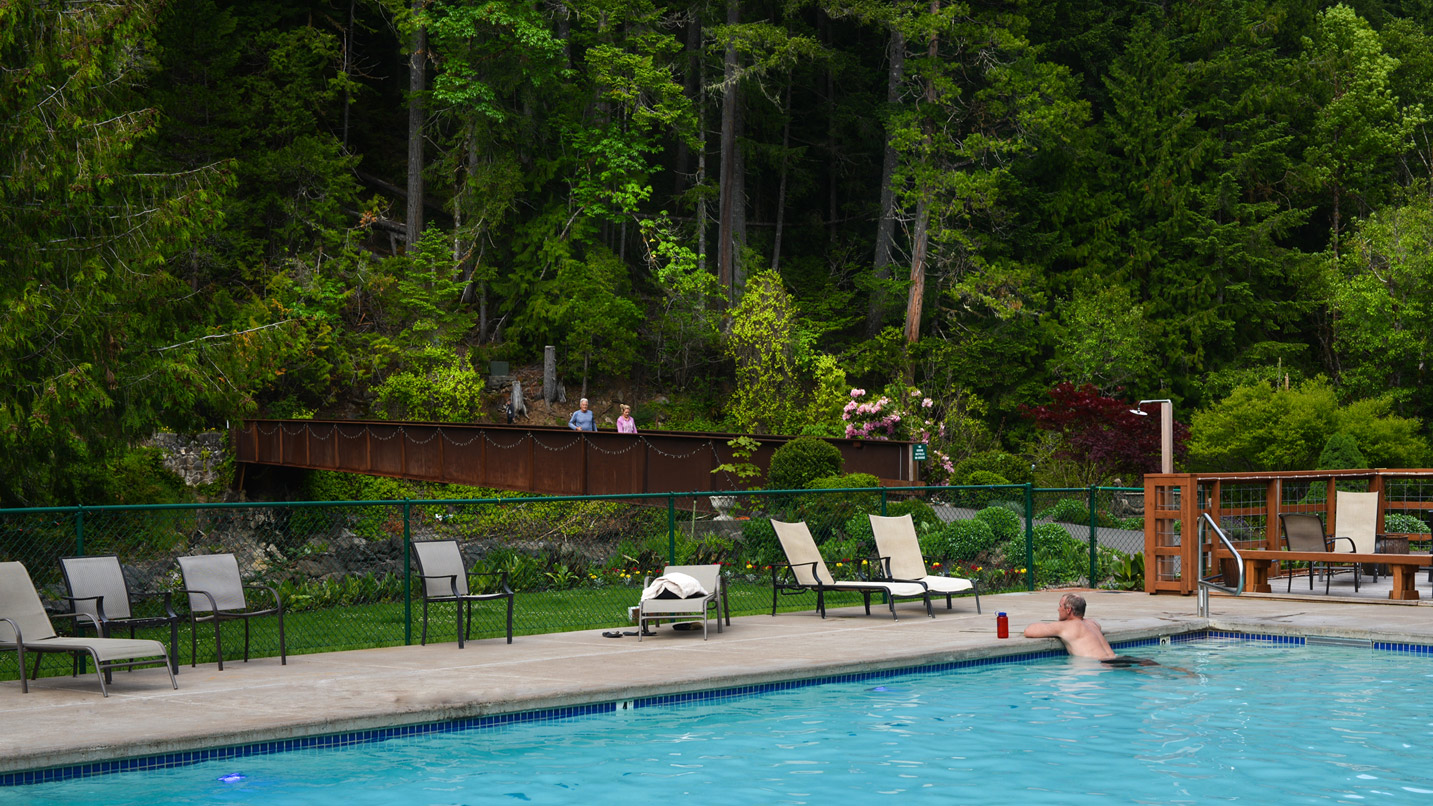
Relax With a Restorative Soak
Countless hot springs cover the Cascade Range and Eastern Oregon, but a few developed resorts make soaking more accessible to beginners and offer year-round relaxation.
In the heart of the Cascade Range, roughly 60 miles east of Eugene, the old-school Belknap Hot Springs hosts two well-maintained, mineral-rich pools filled with piped-in hot-spring water. One of the resort’s pools is open to daytime visitors, and both are accessible to overnight guests who stay in Belknap Hot Springs’ lodge rooms, cabins and campsites. Both pools are surrounded by towering fir trees, sit within earshot of the rushing McKenzie River and afford wide-open views of the night skies — an idyllic sight whether the stars come out or snow falls.
If you’re heading to Eastern Oregon, treat yourself to a high-desert escape with a soak-and-stay at Crane Hot Springs, 25 miles southeast of Burns. Soaking options for day visitors and overnight guests include cedar-enclosed private tubs with adjustable temperatures and a 7-foot-deep hot-spring pond that measures 101 degrees Fahrenheit. The surrounding landscapes dazzle, whether you’re watching stars filling the sky, a blanket of snow covering nearby hillsides or dozens of species of birds flying overhead on their annual migration.
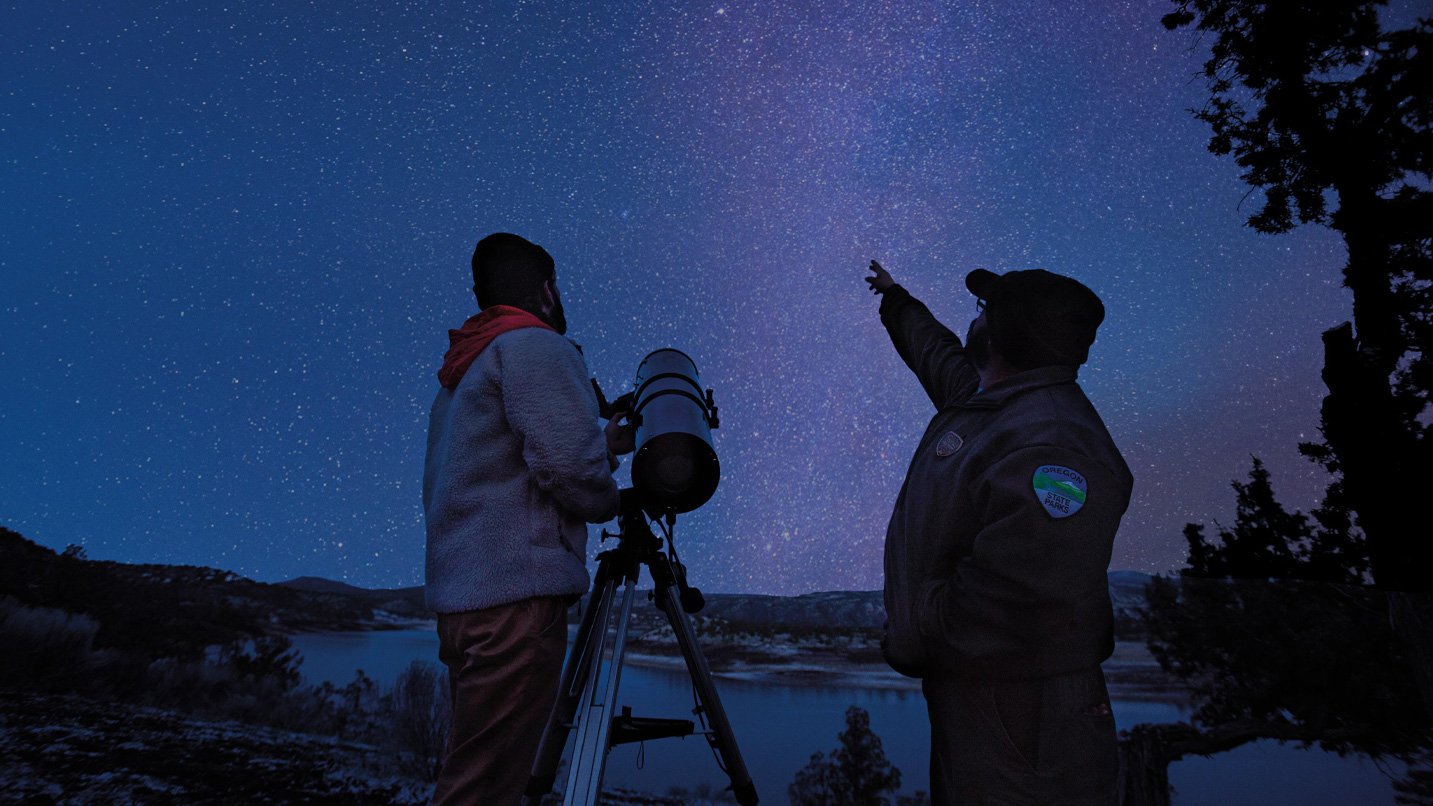
Ponder the Stars or Find Your Center in Central Oregon
Most who visit Prineville Reservoir State Park arrive in summer to camp, fish and go boating — but a trek in late winter or early spring rewards outdoor enthusiasts hoping to stargaze under clear skies. Prineville Reservoir is Oregon’s only state park to be recognized as an International Dark Sky park, and a lack of light pollution means you may see planets, shooting stars and other celestial wonders in almost total solitude. In summer rangers and local naturalists offer educational programming to help visitors navigate the night skies.
The park sits just over an hour from Bend on the shores of its namesake lake, making Prineville Reservoir an easy getaway from around the region. Immerse yourself in its natural charms with a night or two in one of Prineville Reservoir’s five log cabins, all of which are fully heated, include kitchenettes and come with private bathrooms and showers.
If you’d rather hunker down in more luxe lodging, consider the wellness- and sustainability-minded boutique rooms at SCP Redmond Hotel. Conveniently located in the quaint city of Redmond, about 18 miles northeast of Bend, the thoughtful amenities include an option to book a room with minimal electronics. An on-site gym with Peloton bikes and yoga mats is situated near a separate meditation room, and the lobby market and cafe offers healthy grab-and-go snacks and light meals. Ride along the town’s network of cycling paths or take a longer spin on a segment of the 36.5-mile Sisters to Smith Rock Scenic Bikeway nearby. The hotel makes for an easy base camp for paddling trips and wildlife-watching excursions, as well.
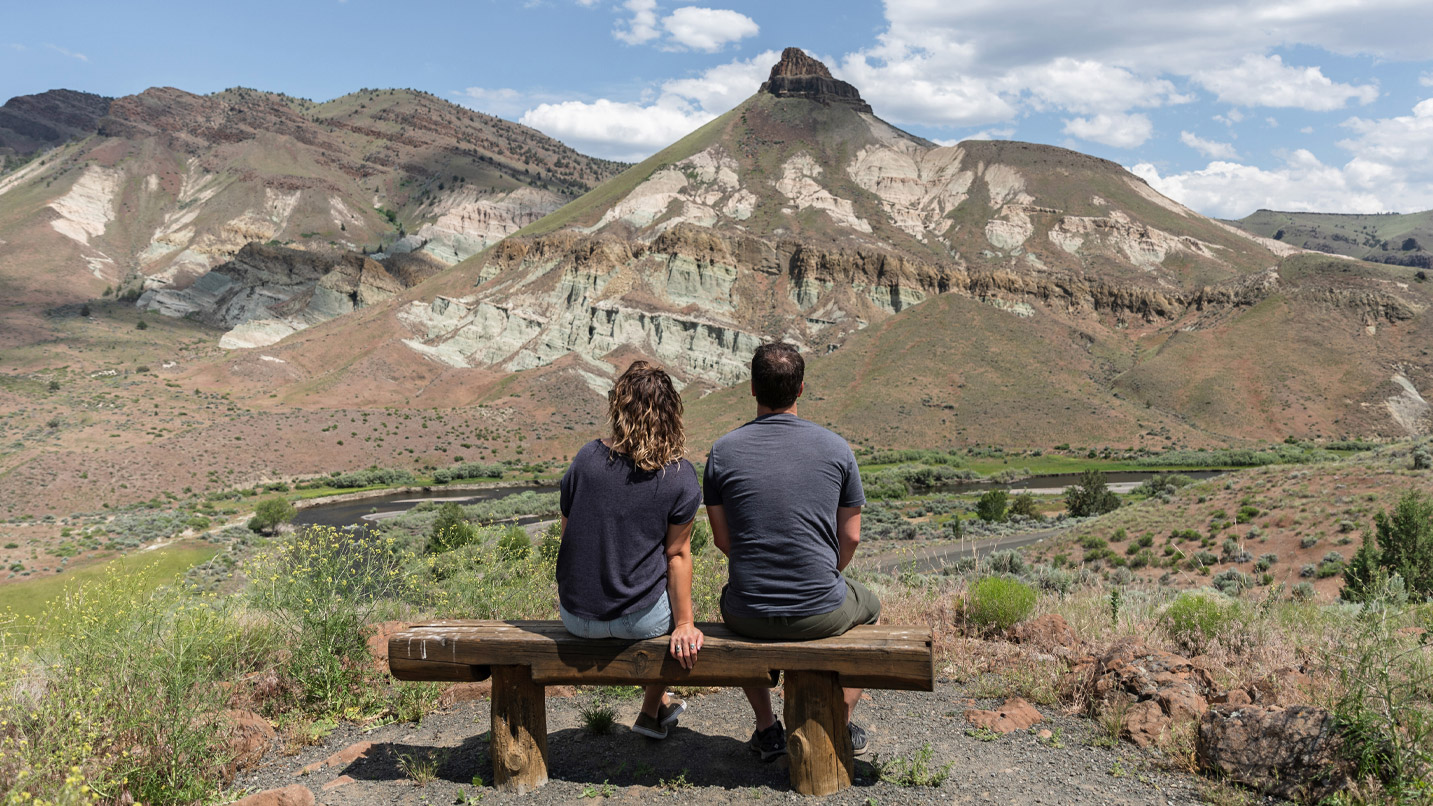
Savor the Solitude Among Ancient Rock Formations
The John Day Fossil Beds National Monument draws photographers and hikers from around the world all year long, most of whom arrive in summer. That makes winter and early spring an ideal time to enjoy solitary hikes through dramatic rocky landscapes that reveal millions of years of geologic history — typically under bluebird skies.
The monument’s three areas feature great short hikes. Just less than 3 miles of mostly flat hiking trails cover the Painted Hills Unit, largely heading through colorful hillsides with exposed layers of rock. At the Sheep Rock Unit, take your pick of eight hiking trails that measure up to 3.25 miles round-trip — after a trip to the Thomas Condon Visitor Center, where you’ll learn how to identify evidence of 50 million years of geology on display. The remote Clarno Unit hosts three short trails totaling 0.75 miles.
If You Go:
Ready to hit the road? See TripCheck for the latest road conditions before heading out and check the National Weather Service for updated, in-depth weather forecasts and advisories. If you’re hiking, be sure to take along the Ten Essentials and let others know your plans.
